A pair of thrones, inspired by a 13th century chair from Oppland, Norway and made as a joint project.
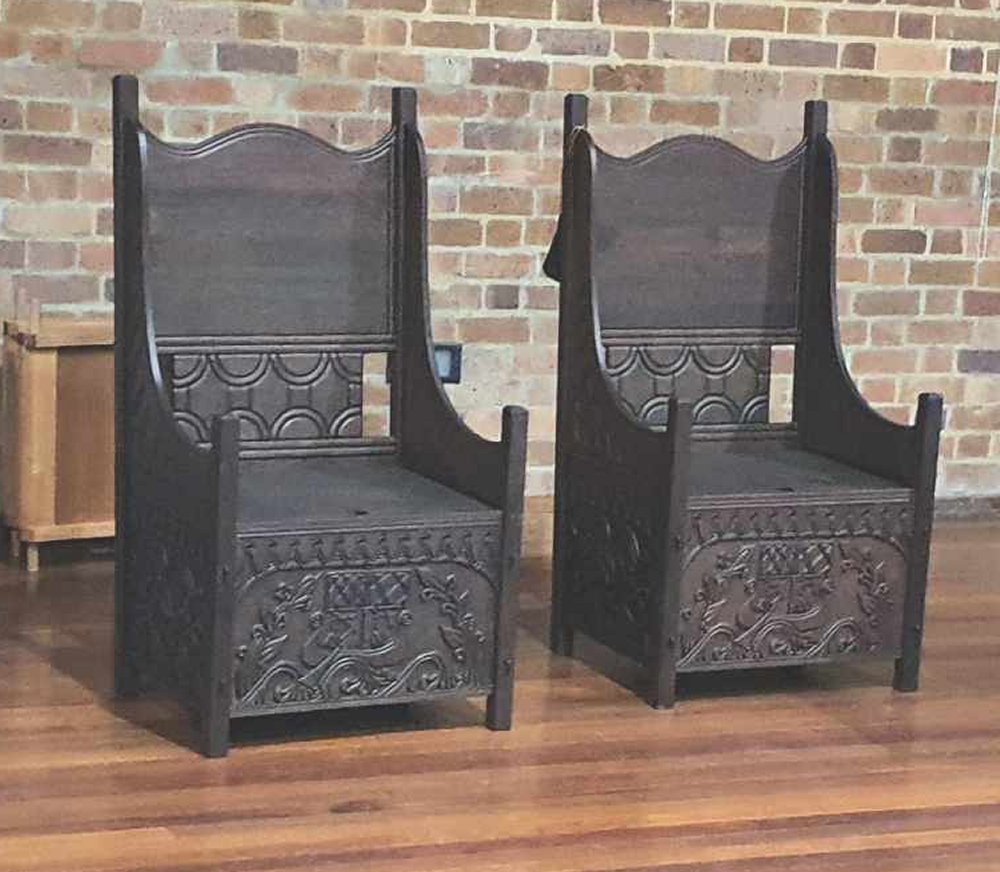
In February 2022, the SCA Barony of Mordenvale had a fire in their storage shed and lost all their event infrastructure, feasting equipment, and many important pieces of history. A call went out for help to replace key items, so Master Owen and I decided to collaborate on making a new set of thrones.
There were several requirements to be considered:
- Mordenvale wanted something that was ‘high medieval’ but also in keeping with the Barony’s early/Norse traditions
- Generous seats – and strong construction
- Robust finish
- Easy to store, transport and assemble.
We wanted to present the new thrones at the Lochac 20th Anniversary event in July, to be held in Mordenvale, so we only had a few months to design, prototype and make the pieces.
Research & Design
I went through my photos from our Baltic trip in 2019 , where we saw a lot of wooden furniture. I had taken some good photos of a 13th century chair from Blakar, Lom, Oppland we had seen in the Historisk Museum, Oslo. It combined both medieval and Norse elements – and could be built from flat panels – perfect!
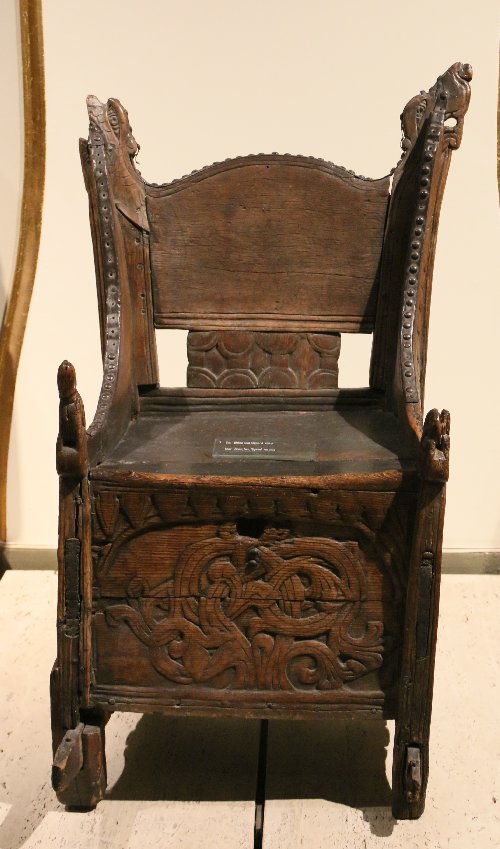
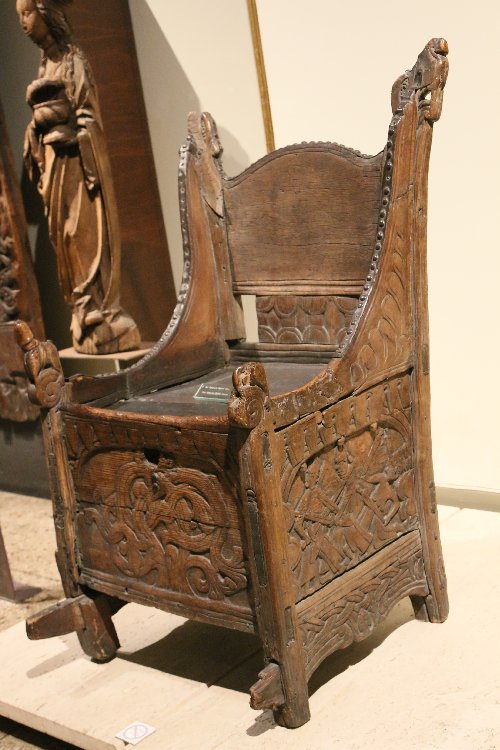
Owen worked on a simple prototype to check the seat size, proportions and how the panels would slot together. Meanwhile, I worked on design ideas…
I wanted to incorporate design elements that related to Mordenvale, while still staying true to the style of the chair. One of the side panels was carved with a man fighting a dragon, which could be easily adapted. To my frustration I had not taken a good picture of this side (I had the other side, with a different design), but was able to find one online.
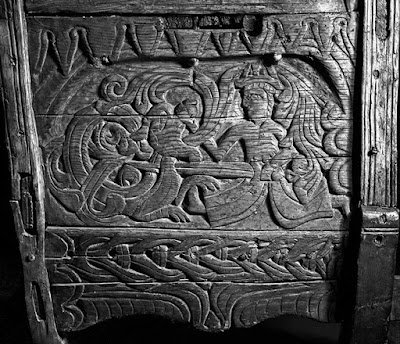
Source: St Thomas Guild
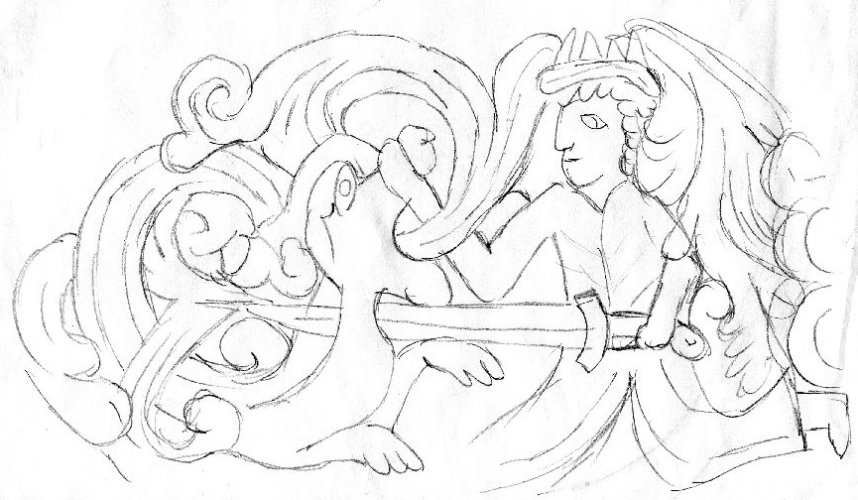
The original front panel was decorated with twining foliage, which was nice but a bit generic. I wanted something more pictorial, ideally reflecting the Mordenvale heraldry with its drakkar and laurel wreath.
In Sweden I had photographed a stone depicting an 8th century ship, which could be adpated, along with the wave and vine forms from the Oppland chair panel. Not contemporary, but could be adapted for a good stylistic match.
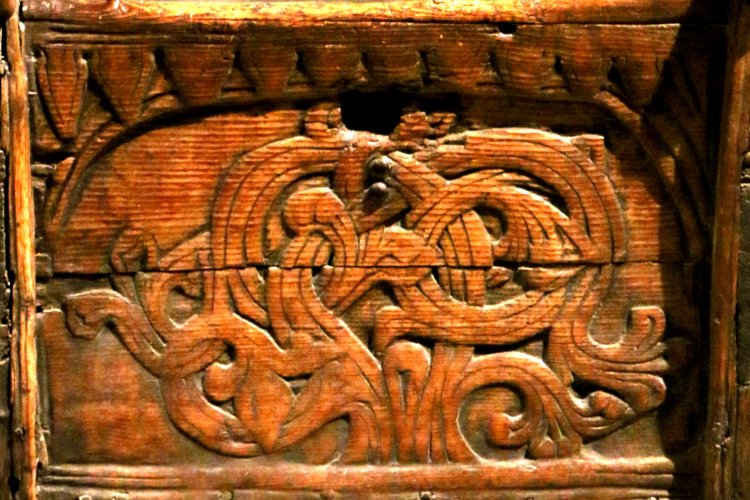
Photo: Robyn Spencer
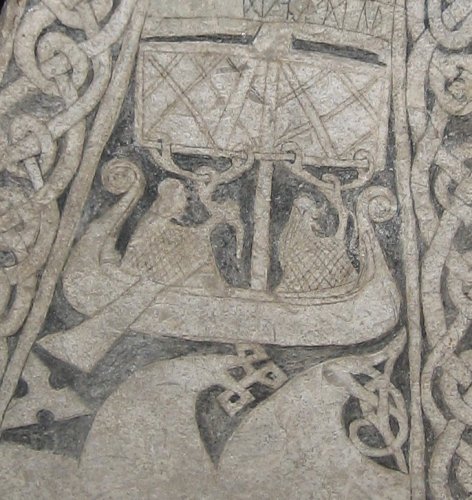
Photo: Robyn Spencer
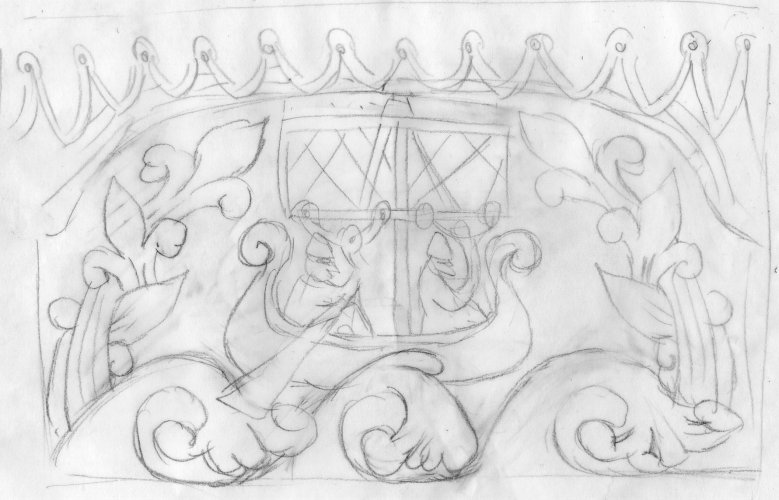
The back of the chair had a curved top section and a narrower decorated panel beneath. Since our thrones had to slot together, the back panel would be made as one piece, with cut-outs beside the decorated section.
The original chair had raked arms with dragon head finials, which added a lot to the visual impact. It was clearly not possible to rake the arms for our flat-pack version, but the side arm design and dragon heads could be used to good effect.
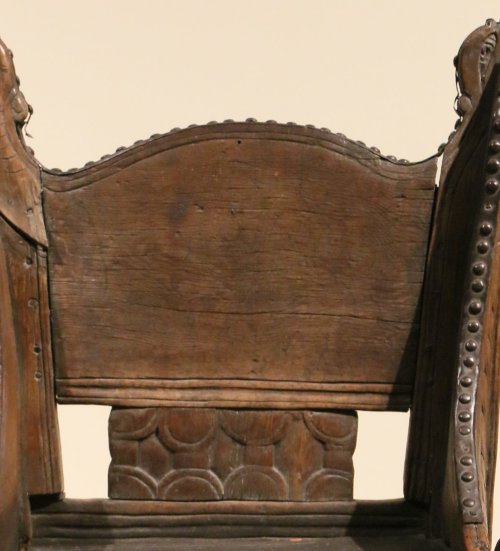
Photo: Robyn Spencer
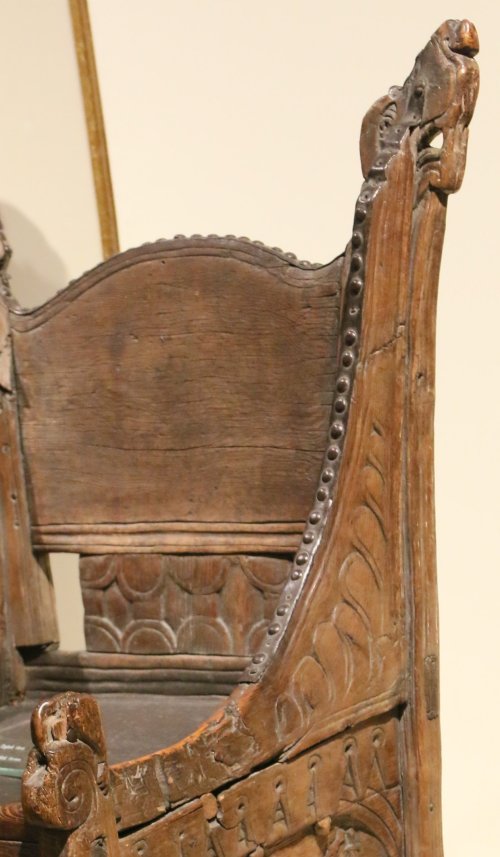
Photo: Robyn Spencer
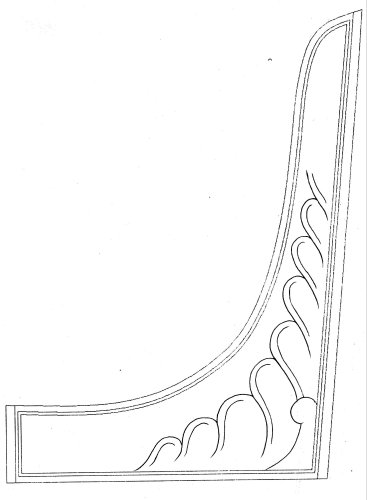
The dragon heads would be hand-carved and added later, so my design did not need to be perfectly to scale. The brass strap with the decorative nails is both decorative and functional, securing the head to the arm at right angles.
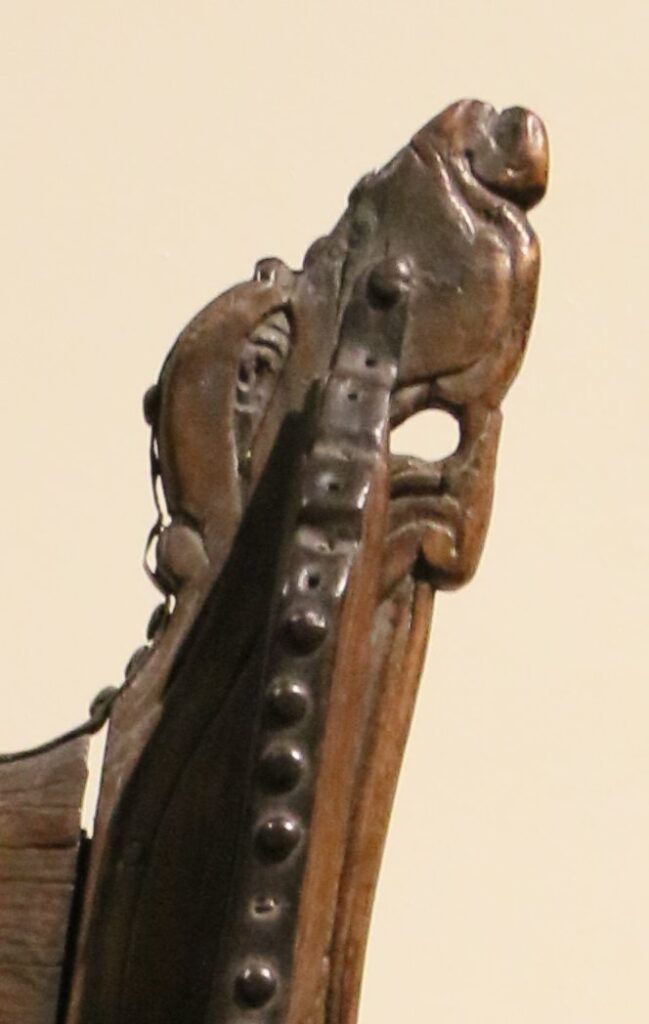
Photo: Robyn Spencer
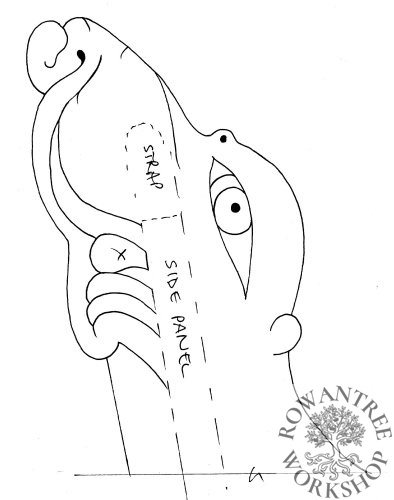
Once Owen had tested the prototype, he sent me the final dimentions for the front and side panels. I completed my final designs and digitised them, ready to use for the panel carvings.
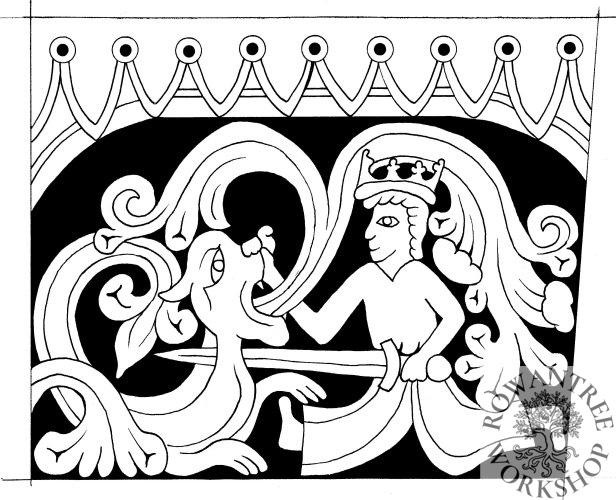
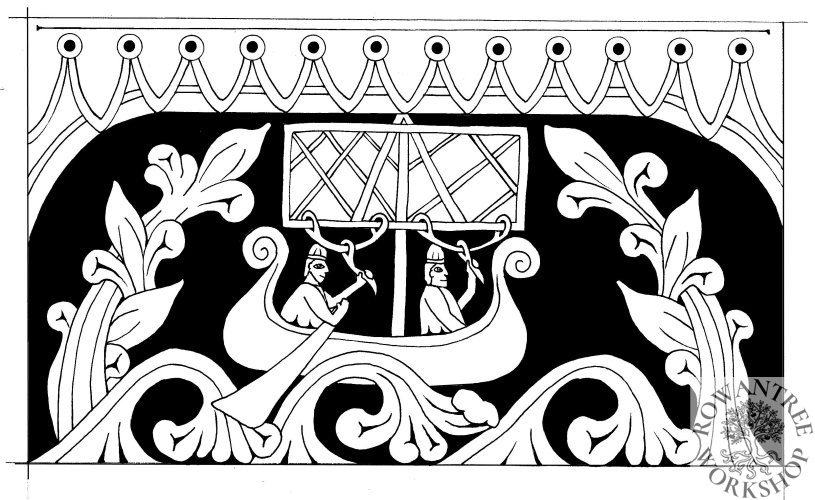
Construction
I sent my files to Owen, who used his large CNC (Computer Numerical Control) machine to cut a test panel. The first version had sharp edges to the design, which looked wrong. He was able to adjust the settings to produce rounded edges on all the cuts, which gave the right effect.
A second test cut worked well, but removed the wood in the top area, which needed to be solid. A third test looked great – on the final build.
Owen cut the panels in merbau, a hardwood noted for durability and strength. He cut the carvings with the CNC and then hand-finished them – the merbau did not cut cleanly, so a lot of sanding was needed to get the right result.
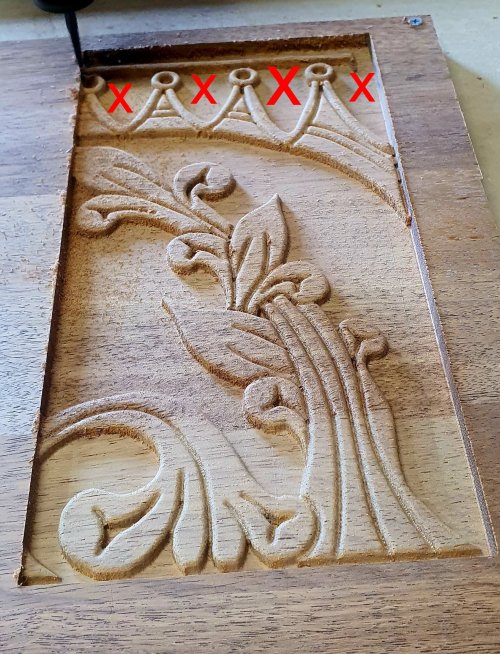
Photo: Owen van Acker
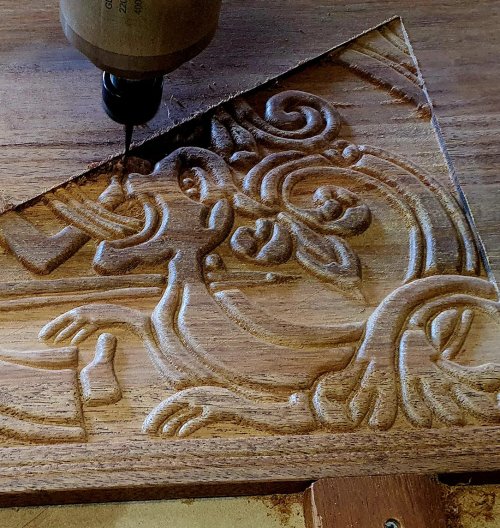
Photo: Owen van Acker
Once the panels were cut, Owen was concerned about the loss of strength from the cutouts in the back panel (fine in a jointed chair, but not in flat-pack). To strengthen the panel, he cut a channel down the back of the narrow side strut and inserted a 6mm steel rod, secured with epoxy. This is not visible when the panels are assembled.
Owen finsihed the panels with UltraDeck decking oil. This darkened the panels more than expected but will provide a durable finish.
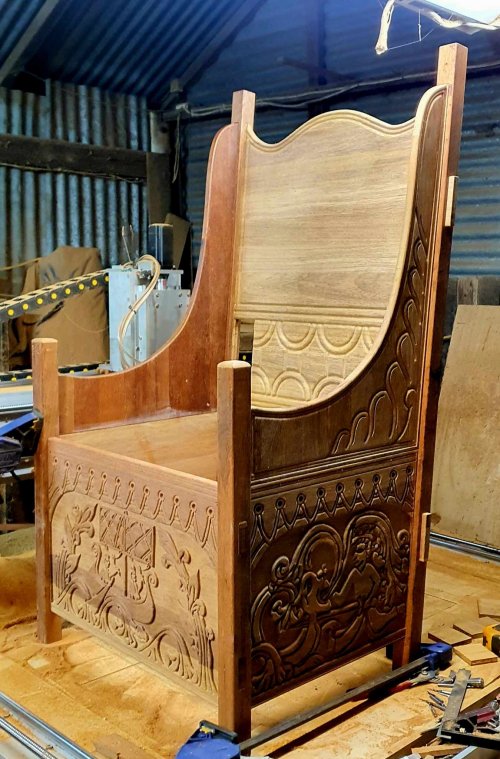
Photo: Owen van Acker
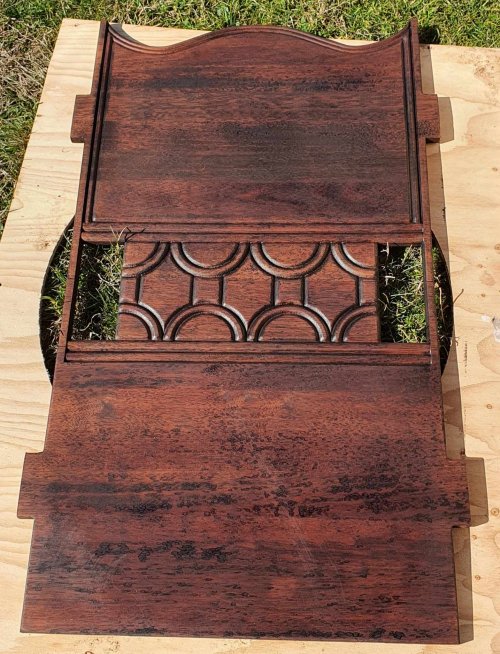
Photo: Owen van Acker

Photo: Owen van Acker
Owen finished the thrones in time for them to be presented at Tocal in July 2022, where they were much admired. The dragon heads needed to be hand-carved and there was not enough time to do these in time for the planned event, so they would be added later.
I had really enjoyed designing them and Owen did a great job bringing my designs to life!
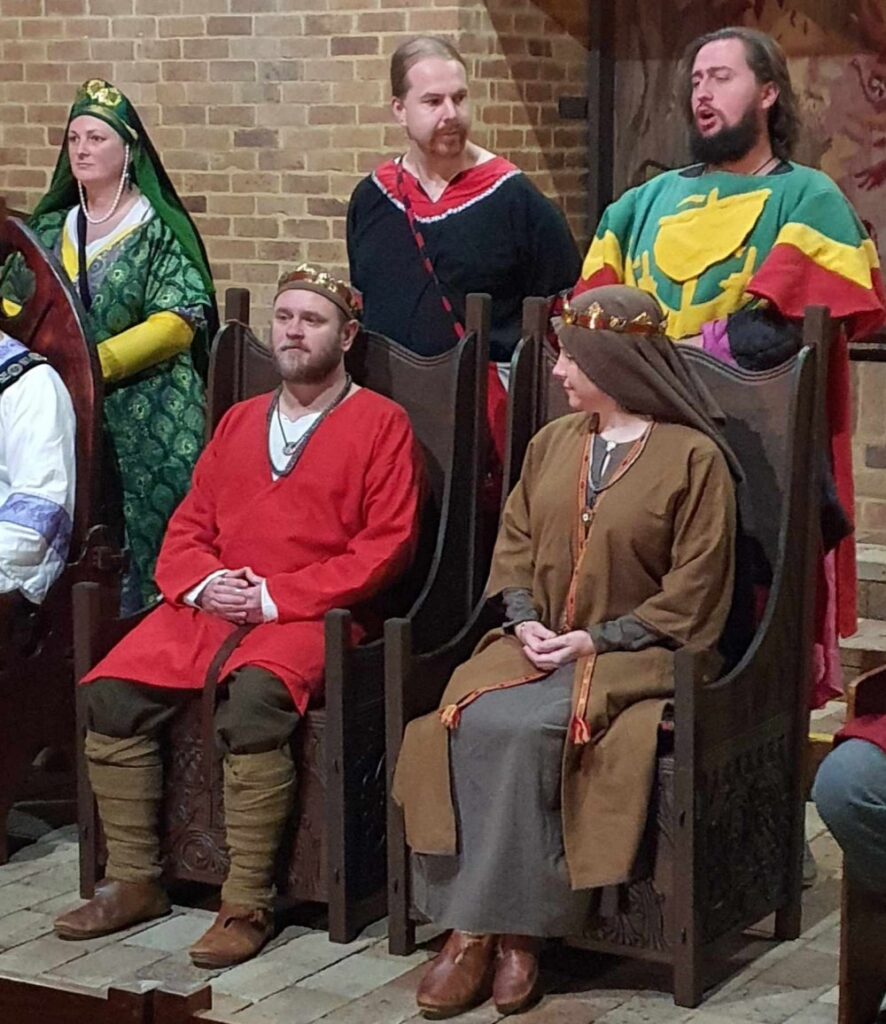
And one day, I hope the heads will make it out of the workshop and onto the top corners 🙂

